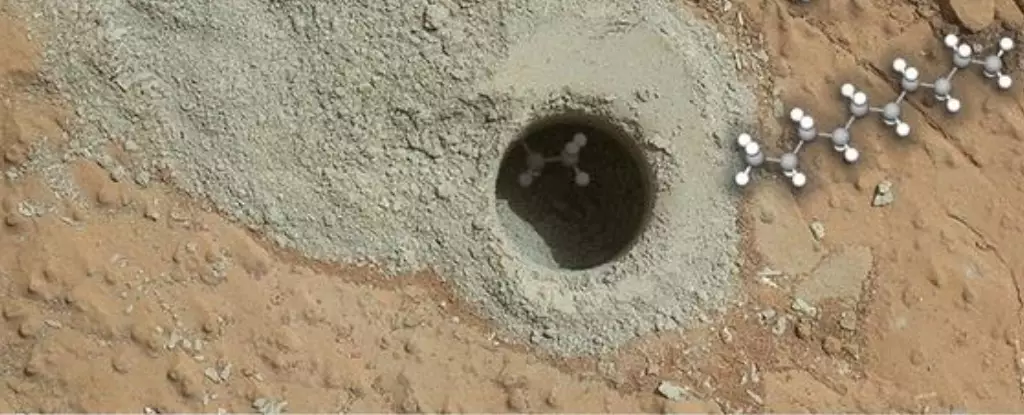The mere thought that life may have once thrived on Mars is nothing short of awe-inspiring. Recent findings from the Curiosity rover have intensified this wonder. Researchers led by Caroline Freissinet from the French National Centre for Scientific Research have identified a series of organic compounds on the Martian surface, including lengthy chains of carbon. This discovery elevates Mars from being just a barren rock to a plausible cradle of life, regardless of whether these chains arose from biotic or abiotic processes. However, why do we continue to entertain the notion of extraterrestrial life, and what does it mean for our understanding of life’s origins?
A Delicate Dance of Chemistry
As Curiosity ventures across Gale Crater, it collects samples that expand our comprehension of Mars’s geological and potentially biological history. The recent analysis indicates the presence of hydrocarbons such as decane and undecane—substances not just of interest to chemists but compelling leads in the search for biosignatures. It’s essential to recognize, though, that while carbon compounds abound on our planet, their existence does not unequivocally equate to past life. Thus, we have to grapple with the dual nature of these findings: they represent an exciting glimpse into what life could be, while simultaneously prompting skepticism regarding the origins of these molecules.
Utilizing a combination of gas chromatography and mass spectrometry, researchers fired up their samples to extreme temperatures, effectively parboiling the Martian mudstones. This meticulous methodology unveiled complex hydrocarbons, yet it also raises pivotal questions. The necessary chemical reactions can occur in non-living circumstances, complicating the interpretation of these findings. Do we accept these as mere geological curiosities, or do we choose to allow our imaginations to soar toward the possibility of Martian life?
The Implications of Discovery
The excitement surrounding the presence of carbon chains is not merely a scientific curiosity; it embodies a cultural yearning for connection beyond our planet. The very essence of exploration dictates that we must inch closer to an understanding of our place in the cosmos. That visceral connection to the unknown fuels many of us to dream. While Mars offers a compelling backdrop for these narratives, each discovery serves as a reminder of what we stand to learn about life’s diversity and resilience across the universe, if we persist in our pursuit of knowledge.
It is also crucial to contextualize our findings within the broader scope of aerospace exploration. Curiosity is merely a stepping stone; future missions will undoubtedly delve even deeper into Martian geology, guided by insights gleaned from the data presented by previous expeditions. Each new piece of information heralds another chapter in humankind’s quest for understanding life, both here on Earth and beyond.
The Role of Skepticism in Science
It is perfectly reasonable to question the findings. Perspective matters; while optimism drives exploration, skepticism keeps us attuned to scientific integrity. The allure of sensationalism surrounding Martian discoveries can sometimes obscure the nuances of data interpretation. In this age of misinformation, we must commit ourselves to an evidence-based approach. Only through rigorous scrutiny can we differentiate mere scientific possibility from demonstrable fact.
In essence, while the long carbon chains could signal the remnants of a bygone world, it’s equally possible they arise from non-biological processes. Nonetheless, their existence necessitates a multi-faceted inquiry that considers a variety of potential scenarios—biological, geological, and everything in between. This understanding is vital, as every theory offers a new pathway to interrogating the fabric of life itself.
Sparking Imaginations, Igniting Futures
While we remain firmly grounded in scientific rigor, the allure of extraterrestrial life demonstrates the power of human imagination. Each discovery, such as the carbon-based molecules on Mars, fuels our desire to transcend earthly limitations and venture into the great unknown. It ignites discussions about the existence of life, not just in our solar system but across the vast expanse of galaxies. The hope that these findings carry is palpable, urging us to dream of what could be, even as we meticulously verify what is.


Leave a Reply